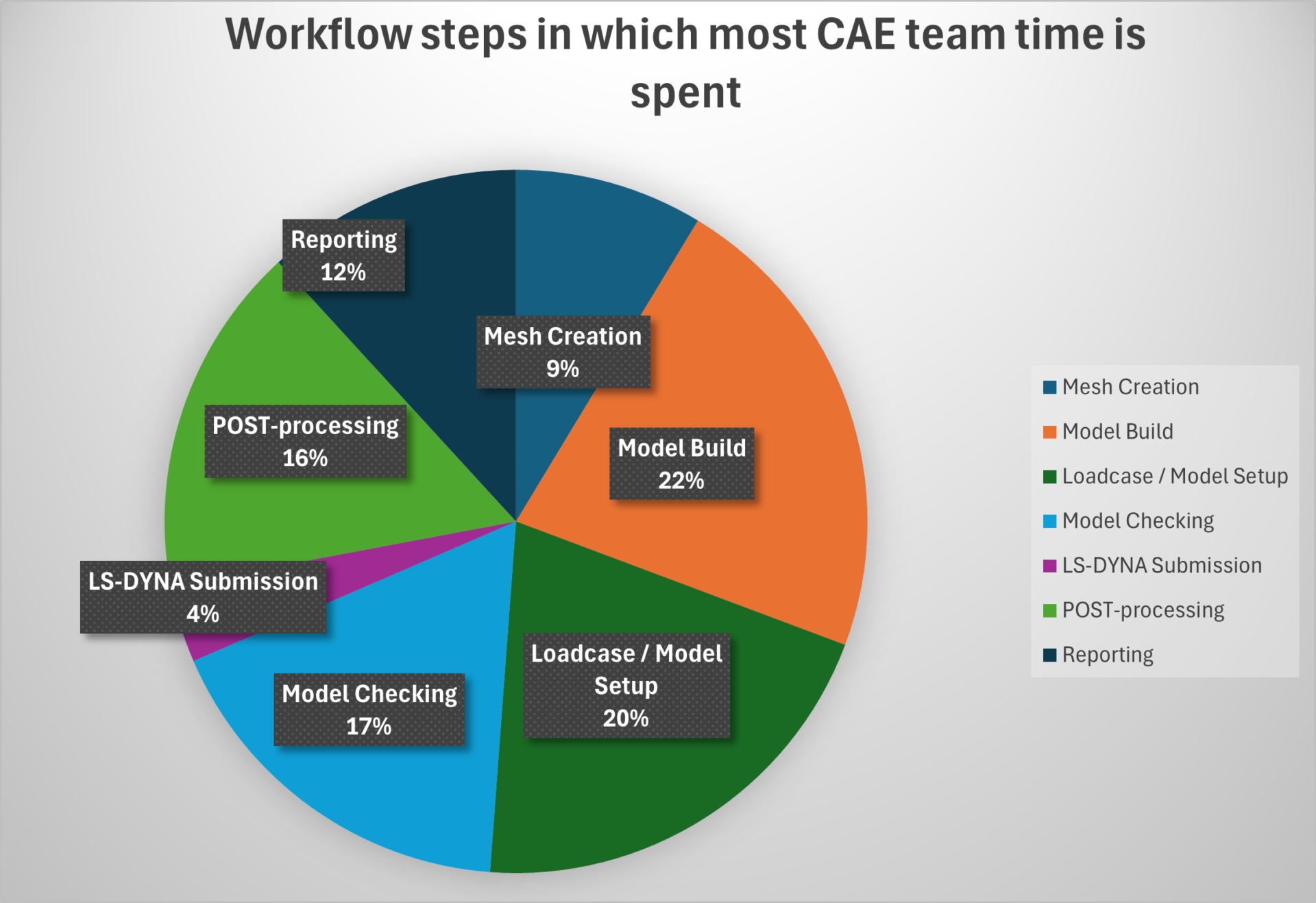How a one solver approach can streamline your team’s workflow
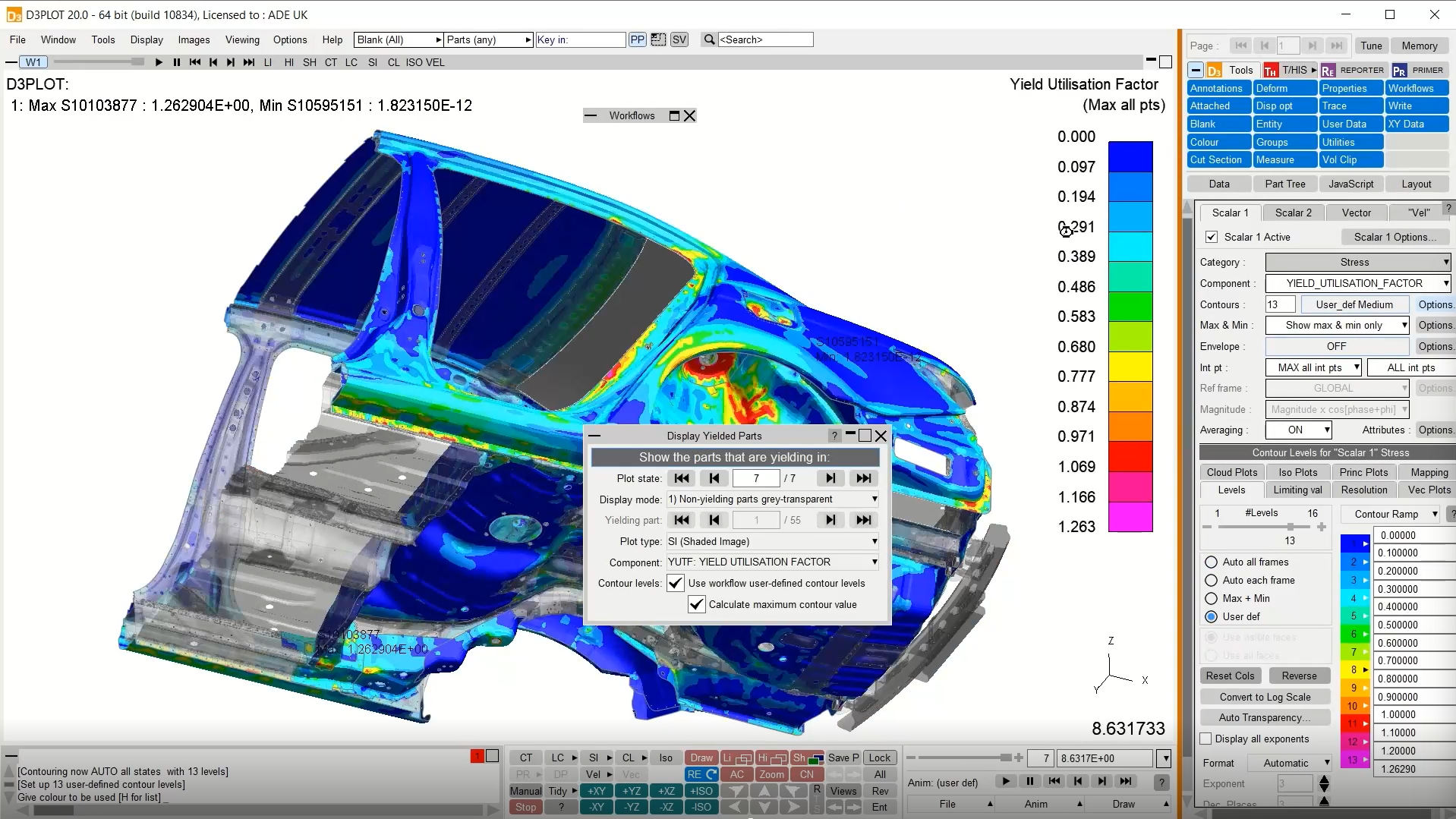
This scenario may sound familiar to anyone who regularly works on the structural analysis of new vehicles. The team is often faced with the challenge of predicting the performance of the structure under a multitude of load cases in a relatively short period of time.
In many automotive organisations, non-linear analysis of body structures (crash or pedestrian safety) is conducted using an explicit solver such as Ansys LS-DYNA®, whilst linear analysis (durability or noise, vibration, and harshness) is often performed in a different, implicit, code.
Traditionally, these disciplines can be distinct within an organisation, with different teams working in each. Inefficiencies can arise from this approach, due to the necessary maintenance of separate models. Our research across multiple automotive Computer-Aided Engineering (CAE) teams affirms that model build, and load case setup are the most time-consuming steps in the workflow.
Results of our survey involving a total of 86 analysts and team members across 9 different LS-DYNA Automotive CAE teams
The models must keep track of the maturing design to provide useful feedback, but the task of keeping them up to date uses a lot of the team’s time and resources. If more than one solver is being used, this load increases because different solvers can require the model to be produced in different formats.
This leaves you with two options:
- Develop a model for each solver independently
- Translate one model into the format for the other solver
Neither option is perfect and often the compromise is that one model receives more attention, or that multiple models exist of different quality. In Arup we often face this issue during project work that we undertake for clients. Fortunately, our model preparation software Oasys PRIMER has powerful translators to convert LS-DYNA configure models into a variety of formats.
However, there is another option – analysis of all linear and non-linear cases using LS-DYNA alone, utilising its explicit and implicit solvers.
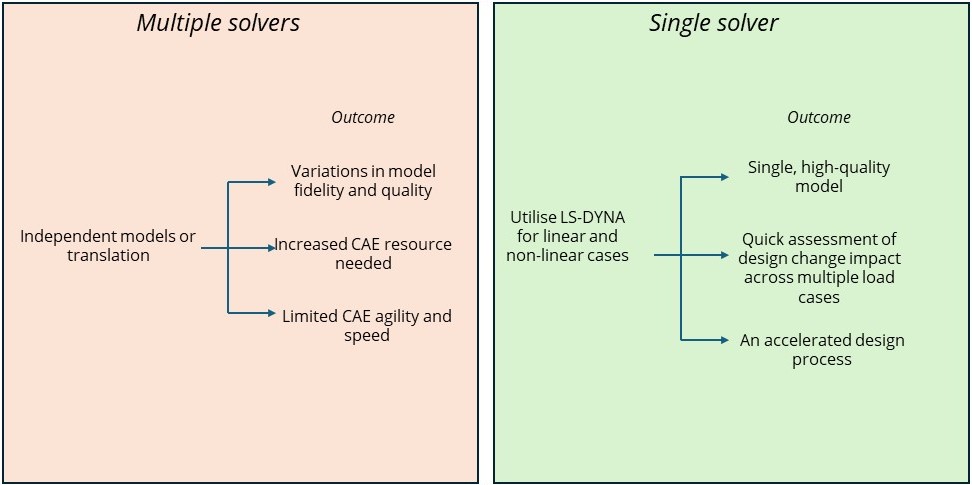
The implicit solver in LS-DYNA has been available since the late nineties. Its capabilities have grown steadily over the years to a point where it is a viable option for production CAE work. As a long time, user and distributor of LS-DYNA, Arup has frequently explored the capabilities of the implicit solver with the desire to deploy it on project work as much as possible. The advantages of using one model for linear and non-linear analysis are clear: less time preparing models in different formats and more time spent doing useful analysis work.
Accelerating the design process
In 2014, we had the opportunity to integrate the implicit solver into the CAE workflow supporting the design of a new electric taxi for LEVC (London Electric Vehicle Company). LS-DYNA was the primary solver for all non-linear and linear loadcases for body, closures and interiors, including crash, pedestrian safety, durability and NVH. The design programme for the taxi was very short, so the benefits of using the one solver were felt immediately; enabling us to provide timely feedback to our client, to ensure that targets and gateways could be met.
We developed a modular model of the vehicle where subsystems could be combined easily using Oasys PRIMER to pick from a shopping list of INCLUDE files. A full crash model could be prepared for analysis as easily as a simple glazed body-in-white for static stiffness analysis. This approach enabled us to answer questions around how changing the structure for one loadcase might affect its performance in another. A key enabler for this one-model approach was the solver’s ability to run either explicit or implicit calculations, depending on the loadcase.
Most readers may be familiar with LS-DYNA’s explicit capabilities, but the implicit solver also offers a range of solution types that are relevant to body design, including:
- Linear statics
- Non-linear statics
- Modal analysis
- Frequency domain solutions
Using the linear statics solver, we were able to quickly calculate benchmark attributes such as torsional and bending stiffness of the body. It is a small step to extend these analyses to non-linear statics, to explore the structure’s response with much larger loads, for example from suspension durability loadcases.
LS-DYNA’s non-linear statics solver iteratively arrives at a solution that can include material and geometrical non-linearities. Considering these effects can lead to a more accurate result than linear elastic analysis, which can produce confusingly high stresses and ignores secondary effects due to displacements or stress redistribution from yielding. The non-linear static solver proved invaluable on the project, allowing us to analyse many bolted joints in detail, including the clamping effects of bolt preload.

LEVC Taxi image
The power of the LS-DYNA solver enabled the team working on the Taxi project to cover many loadcases efficiently, working with a single model that followed the developing design as closely as possible. It is an approach that we deploy and develop on other projects.
Further information on the project with LEVC can be found on our website as well as the supporting paper that was presented at the 15th International LS-DYNA users conference.
Linear solvers are usually used to predict structural dynamics and the normal starting point is modal analysis. LS-DYNA’s Lanczos solver can calculate modeshapes and frequencies for very large models and is easily accessed through a single keyword. The modeshapes can be viewed in the regular post-processor, e.g. Oasys D3PLOT.
Vehicle attributes related to dynamics, such as transfer functions, point mobility and dynamic stiffness can be calculated from these modal properties with the addition of FREQUENCY_DOMAIN keywords. Frequency domain assessment of fatigue strength under defined or random vibration is also available. Data such as random vibration PSD and material S-N fatigue strengths can be input directly into LS-DYNA and the life calculations are performed internally.
LS-DYNA – the latest developments
An exciting development in LS-DYNA R15 is the Fast Lanczos solver. Using a 12M Degree-of-Freedom model supplied by Arup, the Fast Lanczos solver could solve 2000 modes eight times faster than the default Lanczos solver. For NVH problems spanning wide frequency ranges, this technology will provide real benefits in terms of throughput.
As the solver technology continues to develop, our hope is that we can reach the goal of using one solver for all analysis. Whether you are part of an OEM or a developing start up, a one-solver approach and the supporting tools for your workflow will prove key to your team’s collaboration, knowledge and efficiency.
The benefits of a one-solver approach are not only suitable for body structure analysis but is equally relevant to the simulation of electric vehicle battery systems. The recent webinar from the Oasys LS-DYNA Environment explored how the solver can be used not only for the crash related aspects of battery design, but also for vibration, fatigue and thermal analysis. Watch the recording here.
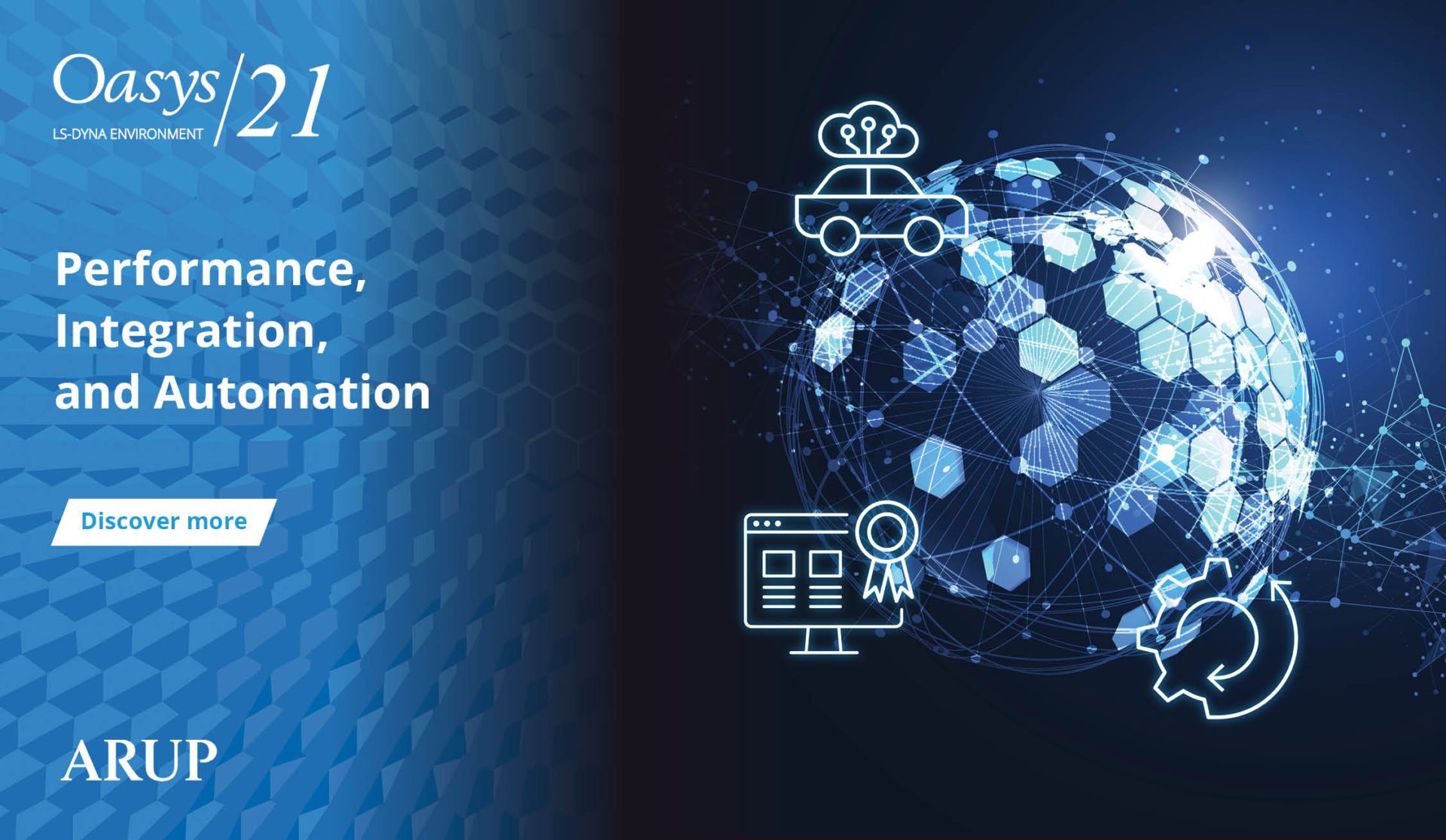
The latest version of the Oasys Suite introduces key new functionality, enabling users to achieve even greater automation and process integration, resulting in significant workflow efficiency and excellent model and results quality. Advancements include highly accurate correlation analysis and controls for Virtual Testing and extended multi-physics related features such as battery modelling and our new Python API.
This release further strengthens the Oasys LS-DYNA Environments’ leading position in the market by offering comprehensive LS-DYNA support, speed, performance, and user-friendliness, as well as advanced crash and safety analysis tools. Find out more.
Simon Hart
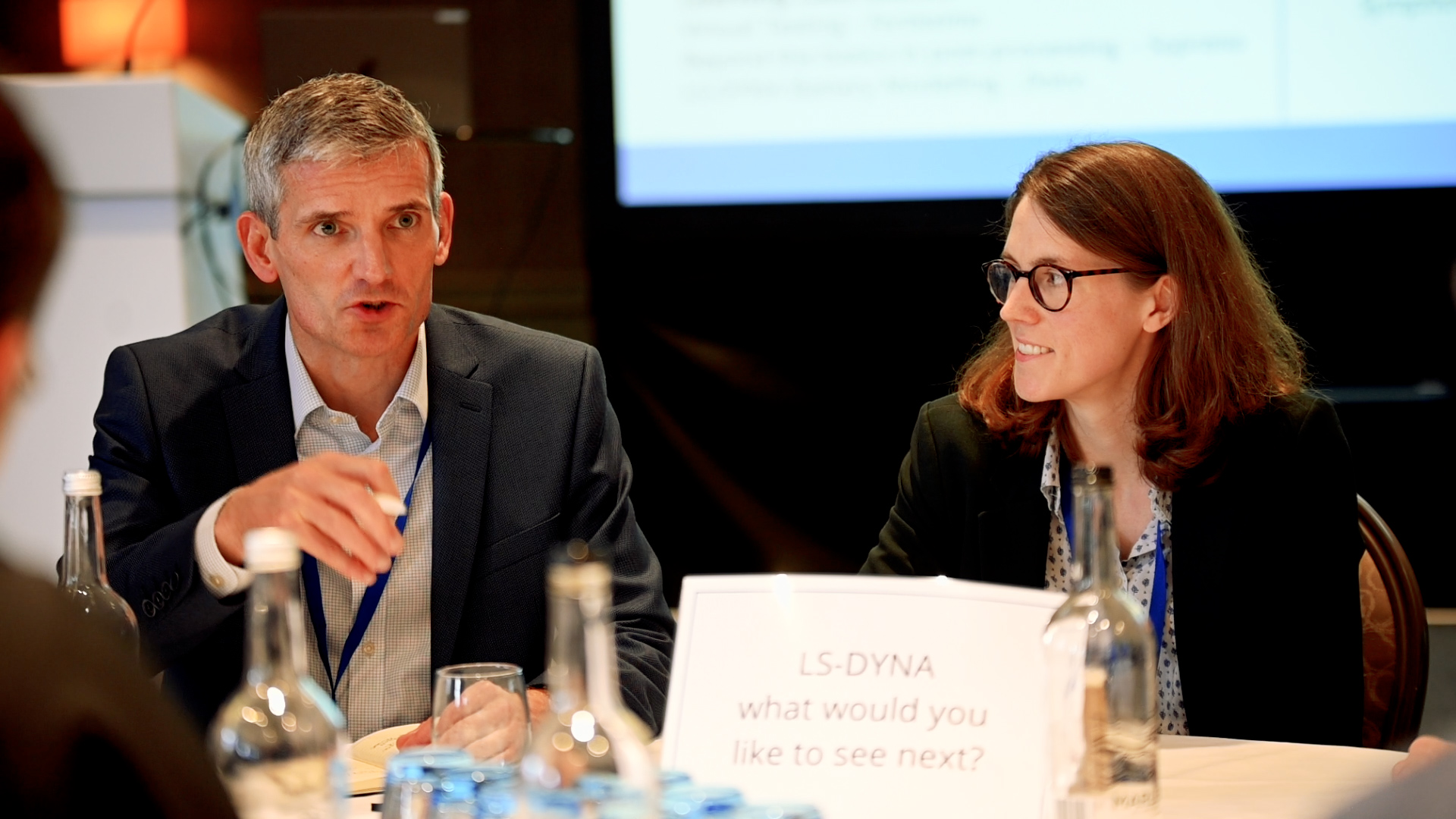
Simon Hart leads the Product Engineering Practice in Arup’s Technical Specialist Services Portfolio (UKIMEA). He has 30 years of experience in the use of Computer Aided Engineering in vehicle design and leads teams of engineers working on new electric vehicle projects. Simon works closely with Arup’s Oasys LS-DYNA Environment software business and provides a link between the development of digital products and their application on engineering projects.

